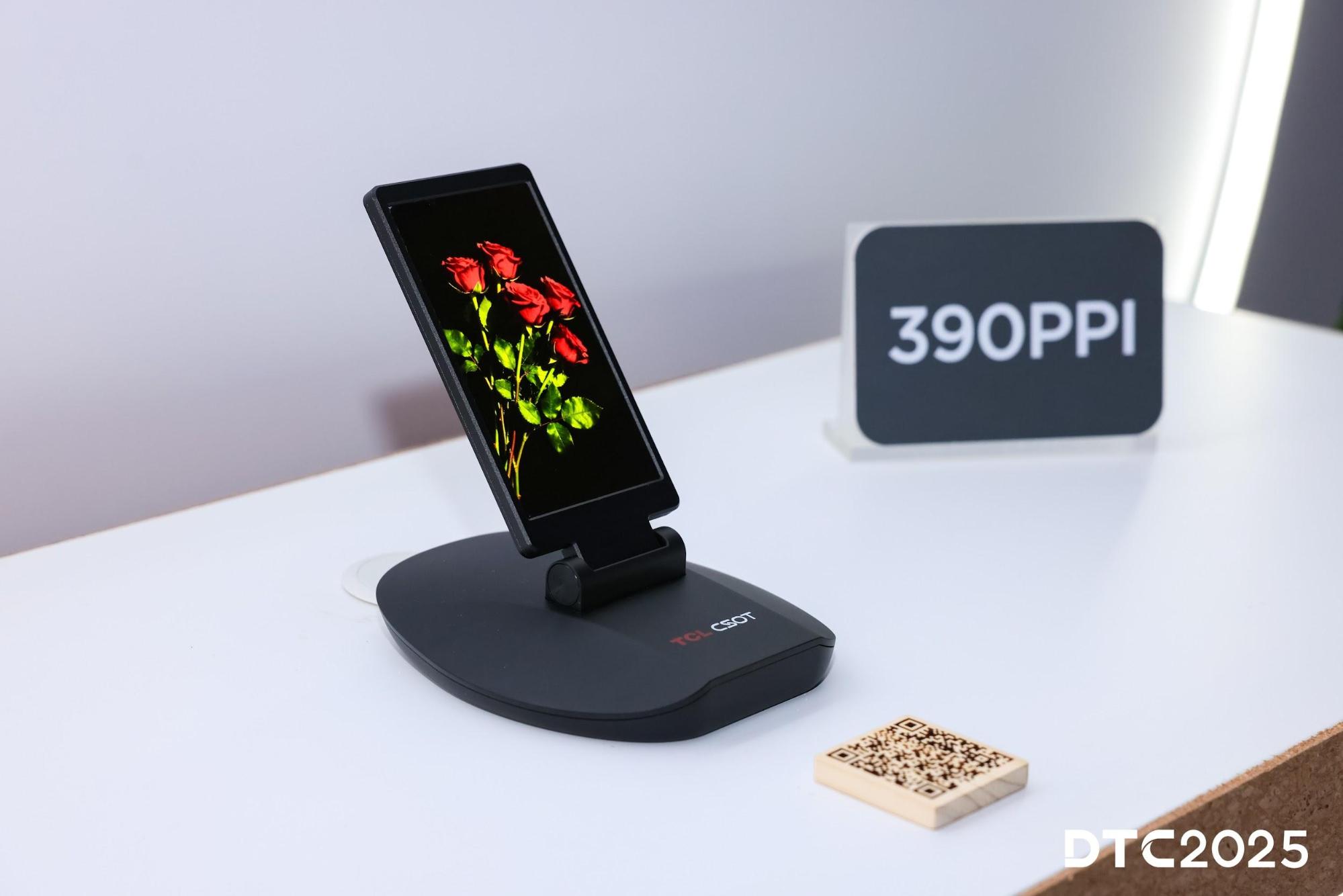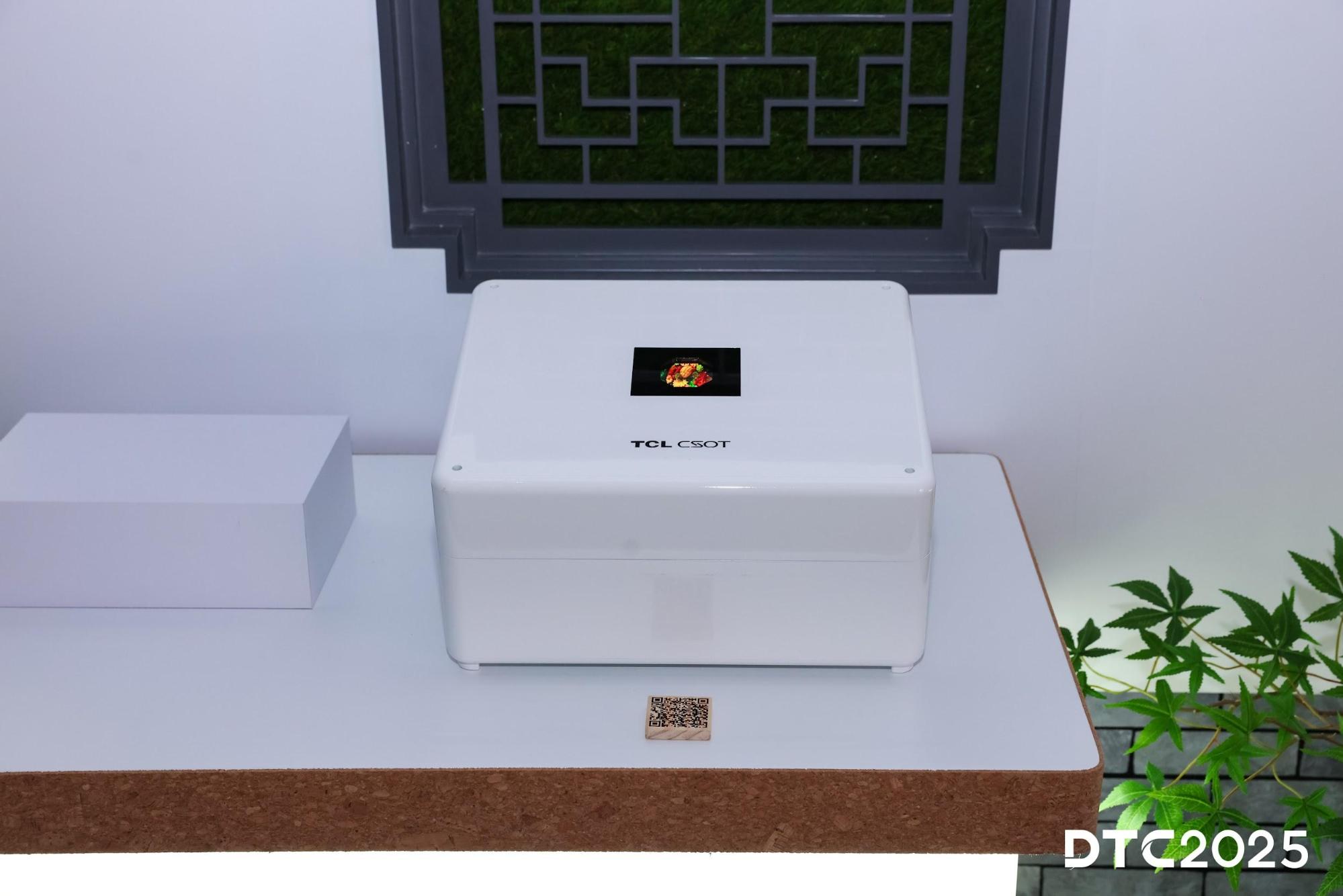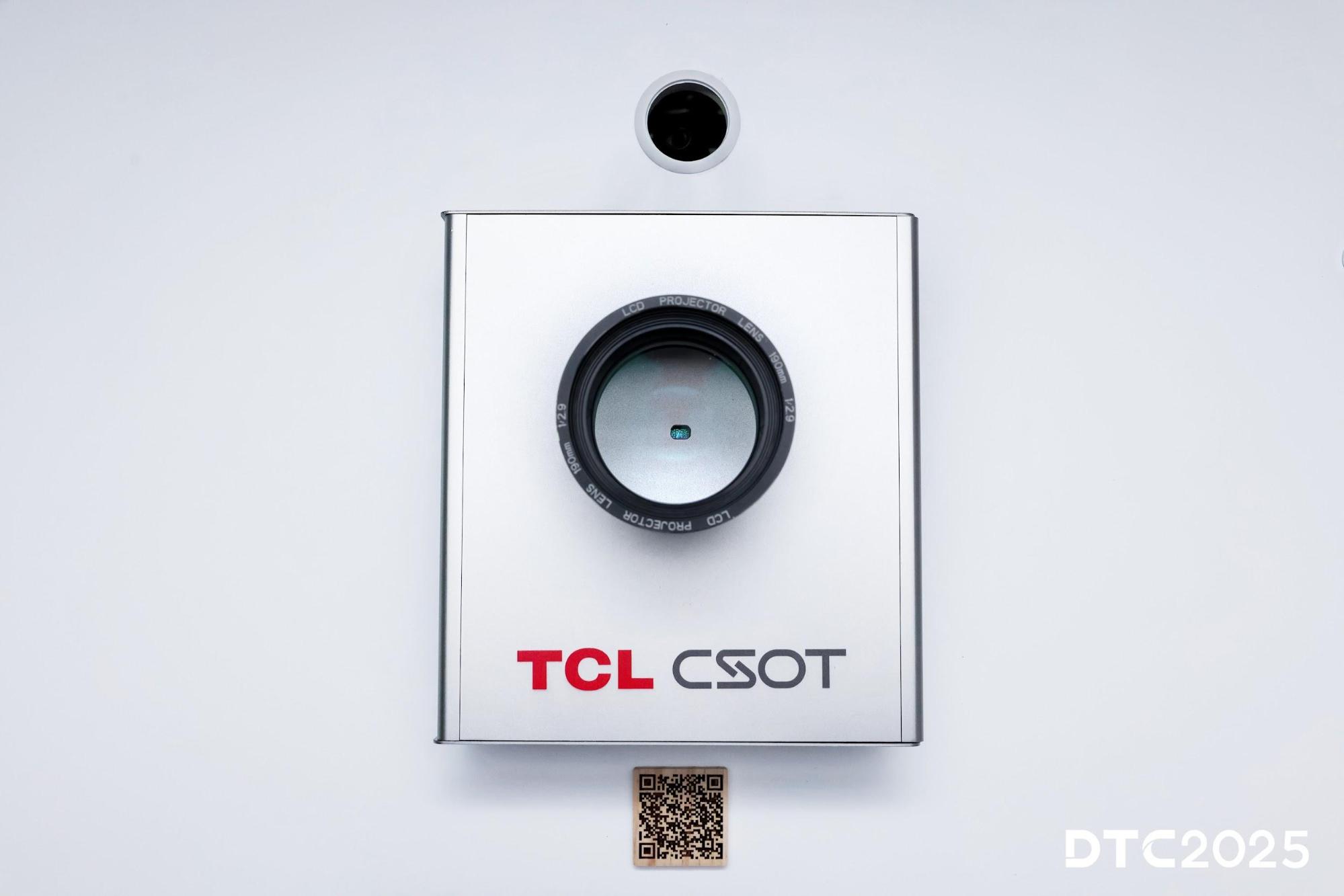Sponsor Content Created With TCL CSOT
TCL CSOT just showed off some of the stunning new display tech it has in the works

The world of displays is continuing to evolve, and at this year’s Global Display Tech-Ecosystem Conference (DTC), TCL China Star Optoelectronics Technology Co., Ltd. (TCL CSOT), a global leader in advanced display technologies and a subsidiary of TCL Technology (000100.SZ), had some major innovations to highlight, including new displays and advancements in its Inkjet-printed OLED (IJP OLED) technology.
What IJP OLED technology can accomplish
TCL CSOT’s IJP OLED technology is capable of some impressive things. It allows the company to precisely install OLED pixels on its screens, making sharp and thin displays.
One example is the company’s 5.65-inch Real Stripe RGB OLED MB Display, the world’s first smartphone display to feature a Real Stripe RGB OLED pixel architecture. This IJP OLED achieves a breakthrough resolution of 390 PPI and a visually equivalent diamond-like pixel density of up to 490 PPI, surpassing current mainstream flagship models. To put it simply, that means a smartphone display screen with exceptionally fine text and detail rendering and without any of the color fringing or clarity issues you might get from other displays’ pixel arrangements.
The technology has also enabled new designs and types of displays, such as TCL CSOT’s 28-inch foldable, portable display with a tri-fold design — another world’s first. This monitor has the compact footprint of a 16-inch laptop while folded and can stretch out to an ultra-wide 28 inches.
For laptops, TCL CSOT has made a smaller 16-inch IJP OLED WQ 240Hz Gaming Display that checks all the right boxes for gaming. It has a sharp 2.5K ultra-high resolution, can run exceptionally smooth at up to 240Hz, and can slow down to 48Hz for power savings when you’re not gaming. It also delivers the vibrant color you’d expect from OLED displays. And since TCL CSOT’s IJP OLED technology doesn’t rely on thick substrates or many layers, it can be ultra-thin and lightweight for ideal use with portable devices.
Bringing that technology to scale globally
It’s one thing to develop advanced technologies for concepts and tech showcases, but it’s another to develop them for mass production. TCL CSOT is prepared for the latter with its IJP OLED. It began mass production of IJP OLED displays in November 2024, marking a first for the industry.
It manages this production with its t8 IJP OLED production line, which is built with efficiency and sustainability in mind, going all the way from raw materials to finished panels at TCL CSOT’s facilities.
“Our t8 production line marks a breakthrough for the global display industry, showcasing technological capabilities and market potential in the high-generation AMOLED sector,” said Jun Zhao, Senior Vice President of TCL Technology and CEO of TCL CSOT. “By bringing together the entire value chain, from foundational materials to final product assembly, we are building a fully integrated, end-to-end industrial cluster designed to compete on a global scale.”

TCL CSOT’s APEX philosophy
These innovations all stem from TCL CSOT’s strategic framework: APEX (Amazing display experience, Protective of eye health, Eco-friendly to build and use and the more nebulous "X" for unlimited imaginative potential). The company is producing sharp and colorful displays, such as the world's sharpest image quality MLED Display (163") announced at DTC, which make for an amazing display experience, and other displays such as the world's first Natural Light Switchable MNT Display (27"), which aim to protect eye health by incorporating anti-flicker technology, supporting low blue light and advancing polarizer technology to reduce eye fatigue and improve visibility.
TCL CSOT is also finding surprising ways to make their advanced display eco-friendly to build and use. While usually you’d think about the highest refresh rate possible on a monitor to serve as an indicator of how smooth moving visuals can look, those high refresh rates can use a lot of power. So TCL CSOT has designed a few new monitors, such as the world's first Partitioned Frequency Division OLED Tablet Display (13.2"), that supports adaptive refresh rates from 1 Hz to 120 Hz, dynamically adjusting to content demands to reduce power consumption by 15 – 25% while maintaining smooth motion, sharp detail, and lifelike visuals. Another of its displays, the world's first Milliwatt-Class NB Display (14.5"), can refresh just 3 times every ten seconds while displaying content at a comfortable brightness level and use just a single watt of energy — less than many TVs use in standby mode. TCL CSOT is even innovating ways to make different parts of the screen run at different refresh rates for power savings and smooth motion each where they’re needed.

TCL CSOT also brings that X factor by going beyond typical display use cases. Take its 0.28-inch world’s highest-res Single-Chip Full-Color Si-Micro LED Display, an ultra-compact display with a 5131 PPI pixel density made for near-eye applications such as AR and VR glasses, which can benefit considerably from the clarity and low-power operation. TCL CSOT has also developed a 2.56-inch world's highest PPI Real RGB G-OLED display delivering an incredible 1,512 PPI and supporting a 120Hz refresh rate, proving ideal for XR devices.

Embracing the AI-powered future
TCL CSOT is also preparing for the future by embracing AI. The company is using AI to help it design displays, and it’s also building displays to work in AI-powered devices.
TCL CSOT has already created 130 smart algorithms that it employs in its factories to help automate processes and optimize product development. This helps boost efficiency in manufacturing, research and operations.
TCL CSOT's use of AI alongside displays helps empower features such as intelligent environment adjustments to ensure content looks its best and energy is conserved. This integration of AI into displays is also what enables some advanced new technologies, like the ability to have different parts of a display run at different refresh rates.
And TCL CSOT aims to see its displays land in AI glasses. While many AI glasses lack displays, TCL CSOT believes that AI glasses with high-quality displays are on the horizon, making for a true AR experience.
"We are entering a transformative era where display innovation must serve both people and the planet. Through our advanced display technology brand, APEX, TCL CSOT is building a comprehensive display ecosystem that embodies technological leadership," says Zhao. "We deliver great screens to customers and consumers worldwide while contributing to a sustainable future. By integrating AI technology, we make every screen a vital hub that seamlessly connects the digital and physical worlds in the AI era."
Get instant access to breaking news, the hottest reviews, great deals and helpful tips.
